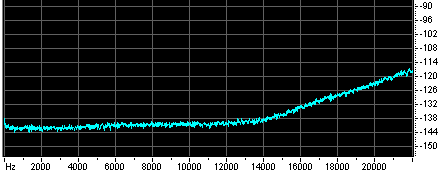AnalogSteph
Major Contributor
(Expanded the specs there for ya.)Can you replace AD745 opamp now (NRND)? Without paralleling new, more noisy IC.
"ULTRALOW NOISE PERFORMANCE
2.9 nV/Hz at 10 kHz
0.38 uV p-p, 0.1 Hz to 10 Hz
6.9 fA/Hz Current Noise at 1 kHz"
That really depends on the circuit.
The AD745 is a bit of an odd beast, being about the lowest-noise JFET input opamp I know of. (OPA1656 gets close but, being MOSFET input, has more 1/f noise.) For very specific applications that benefit from its low voltage and current noise and where little to no common-mode voltage is present, it's a great part no doubt. MM phono preamps or the transimpedance amplifiers for hydrophones mentioned in the datasheet would still be good applications. Not sure I would use one in a DAC I/V without at least some prior filtering any more, slew rate is only 12.5 V/µs and that's not too hot for a FET input part.
The reason why the part isn't a lot more common comes in the INPUT IMPEDANCE section. Input capacitance is 18 pf common-mode / 20 pF differential! (Your average JFET input part has about 4 pF.) And that, I am sure, includes plenty of common-mode nonlinearity thereof. If you were to test this part Samuel Groner style, input impedance linearity and common-mode linearity would probably look really bad. In a lot of common audio applications involving lowish-gain non-inverting circuits at highish levels, it would probably rather stink. And I can't imagine it ever was that cheap.

